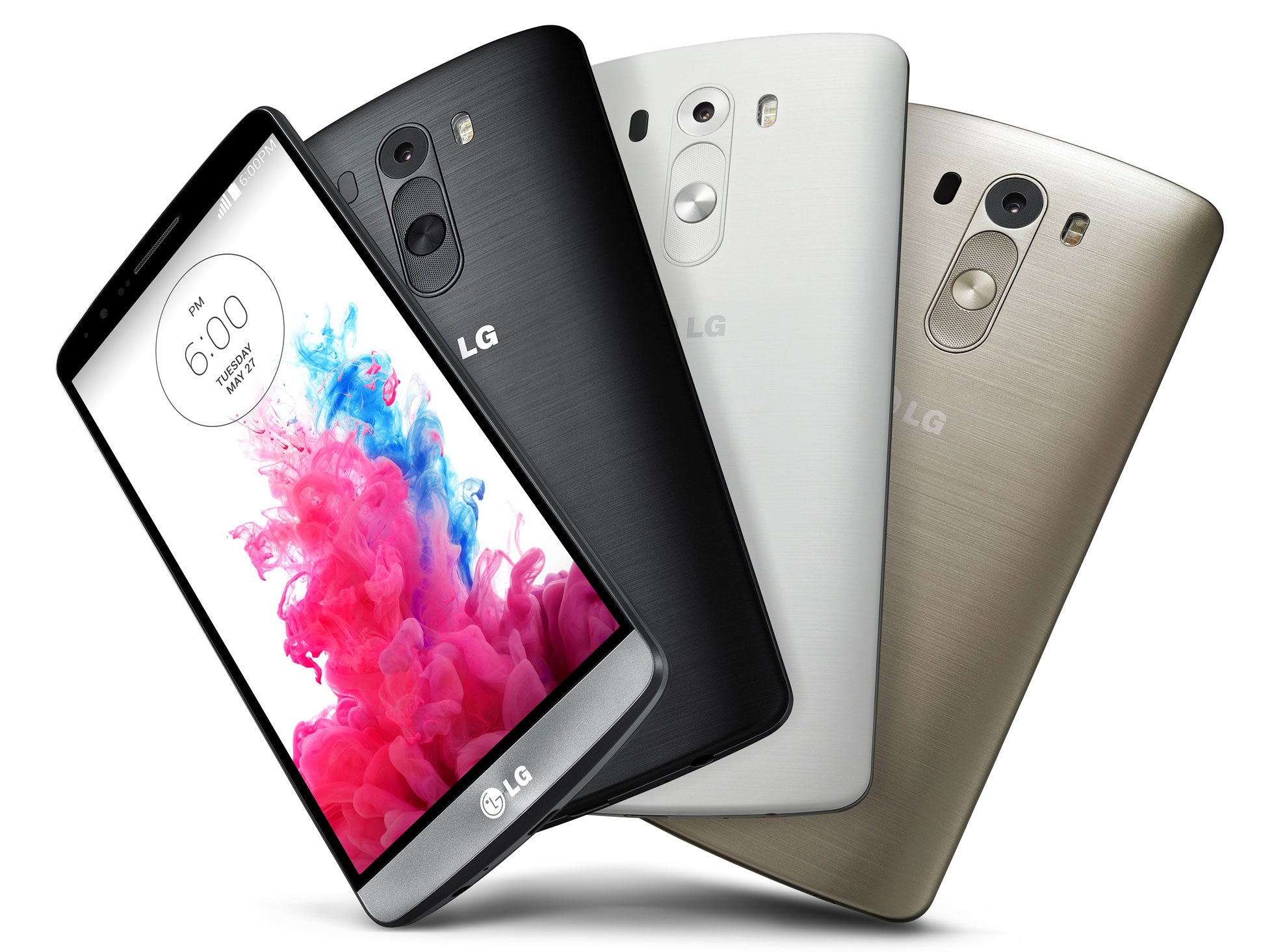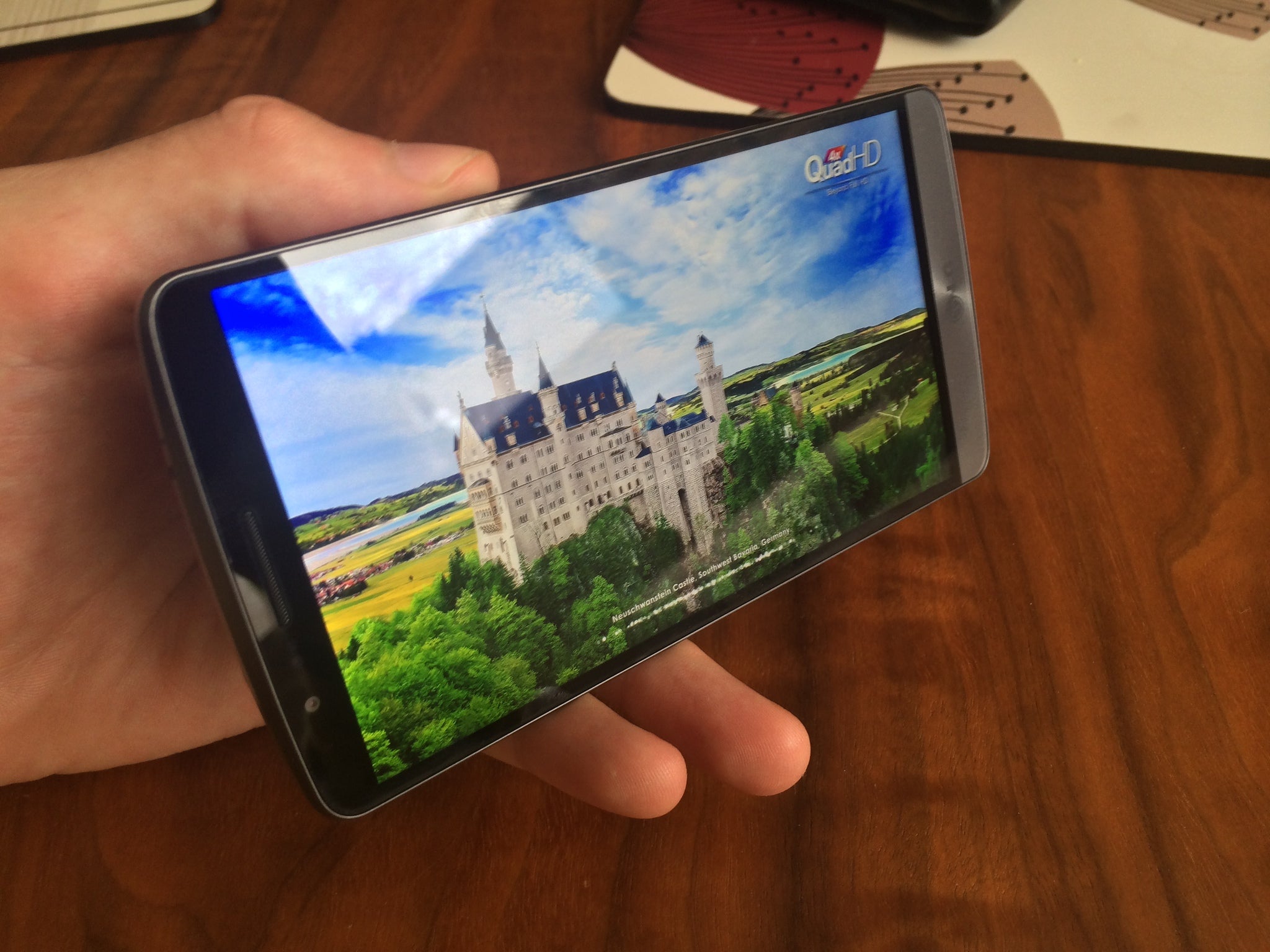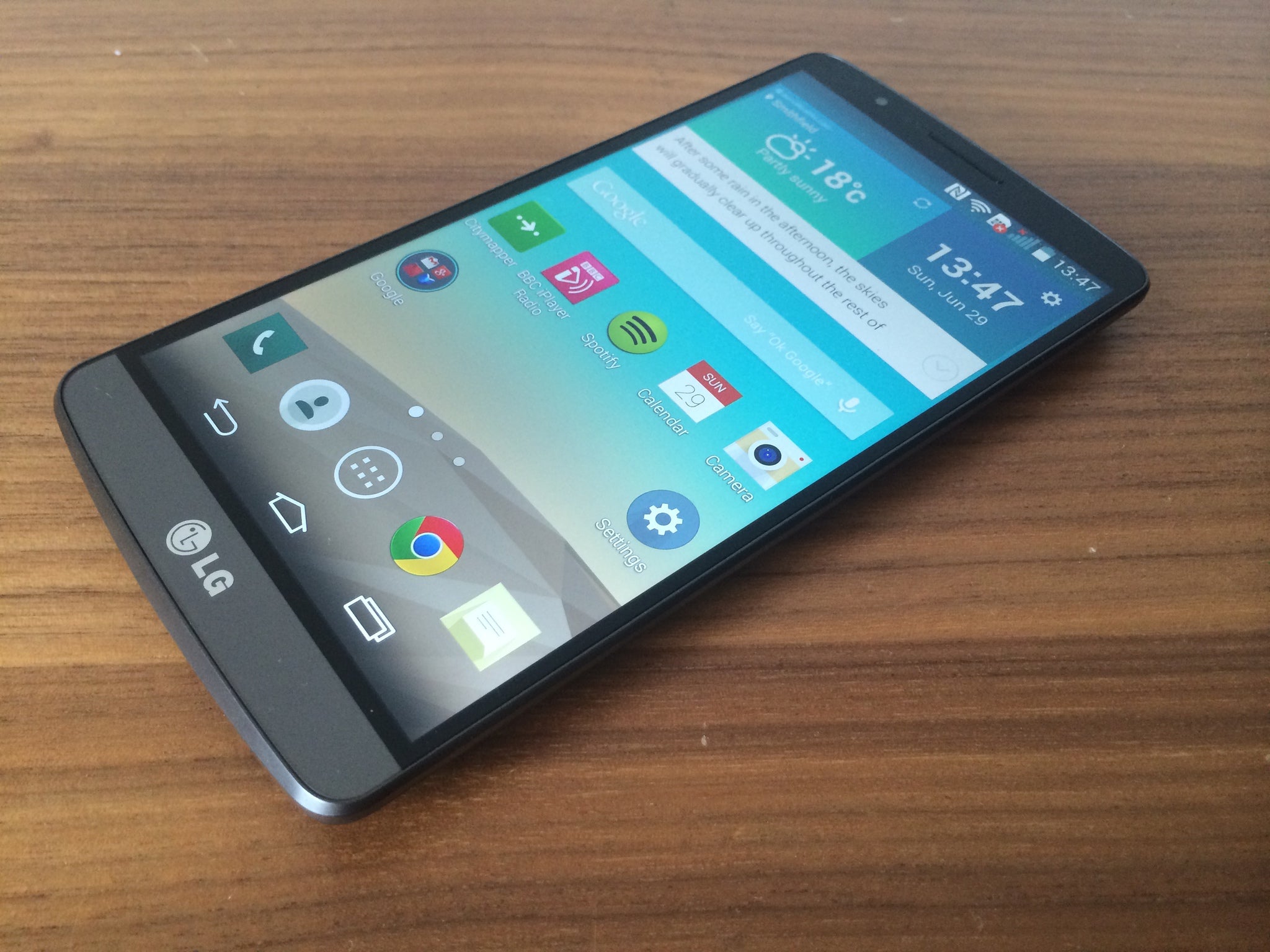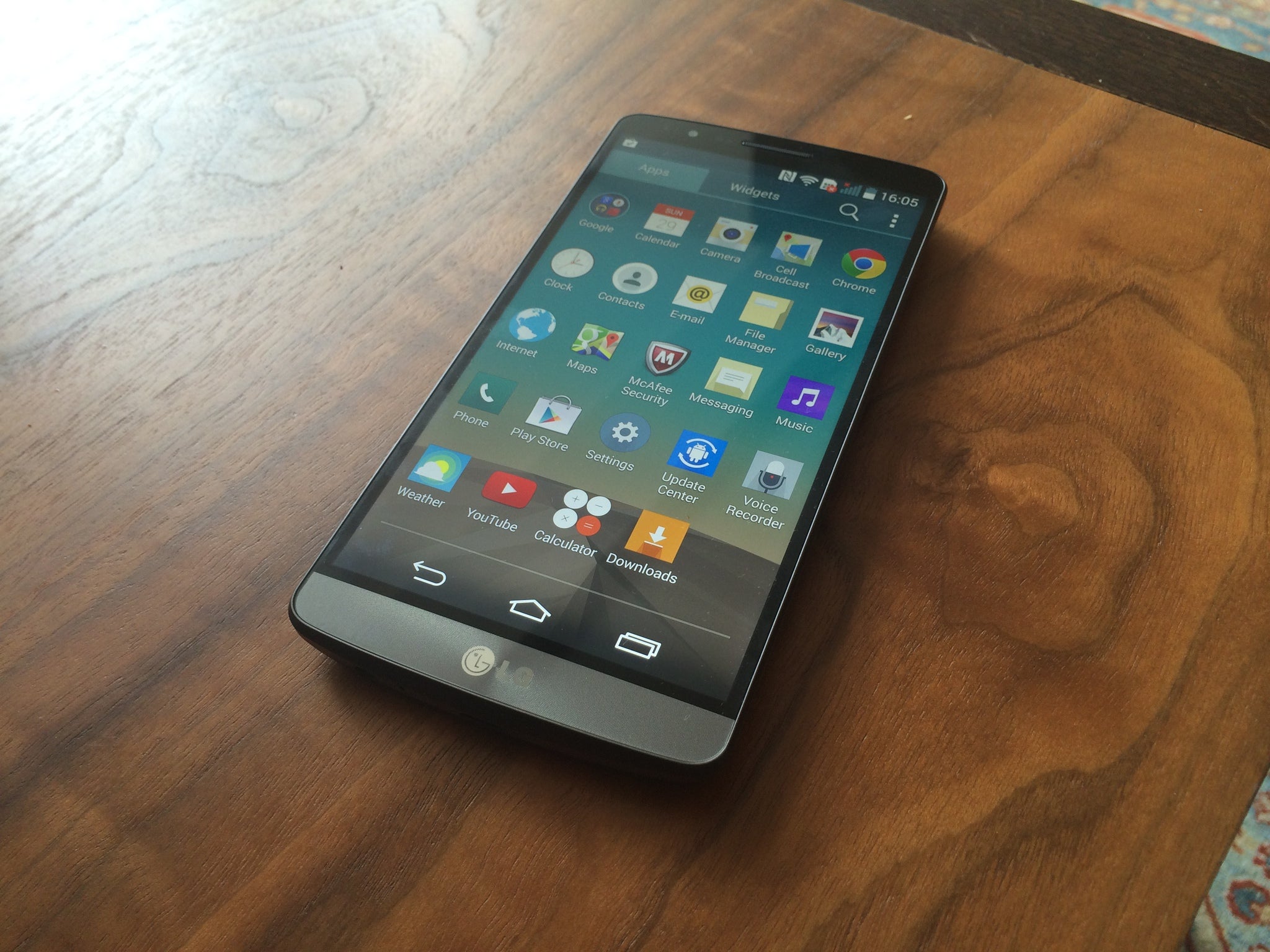LG G3 review: the best Android smartphone yet
The massive screen and rear-button placement might not be for everyone - but if you're okay with this then LG's new G3 is the phone to beat

If you wanted an all-singing, all-dancing Android smartphone a couple of months ago then you would have been forgiven for thinking that your choice was solely between Samsung’s Galaxy S5 and HTC’s One M8. However, LG’s new G3 might just have beaten them both - proving that even a manufacturer on the back foot can produced a truly stunning device.
Display
The first thing that you notice about the G3 is the screen. LG has dropped the 5.2-inch HD display of the G3’s predecessor in favour of a 5.5-inch, quad-HD screen (that’s four times the pixels of a 720p display – or 2,560x1440) that's easily superior to the iPhone 5s and edges out both the S5 and One M8 - although only if you’re paying close attention.
The screen looks especially sharp showing LG’s pastel-coloured and restrained take on the Android operating system but where the company has really excelled is in minimizing the bezels - making the handset feel simultaneously larger and more usable than its rivals.
While no one would accuse the screens on the One M8 and S5 of being small (they’re 5-inches and 5.1-inches respectively) the G3 manages to squeeze in that extra real estate while only being a couple of grams heavier than its lightest rival.

For us this made the G3 the best phablet experience on the market. We’ve never been a fan of large screen devices (phones that feel like super-smart remotes are better than over-sized tablet replacements) but the curved back of the G3 sits nicely in the hand and while there’s still the seemingly-eternal problem of having to stretch to reach the top, opposite corner of the screen with your thumb, a handful of software features (including a very adjustable keyboard and a dual-screen functionality) just about made up for this.
Design
However, the size of the phone is where one of the G3’s make-or-break features comes into play. In order to compensate for larger screens many phone manufacturers have taken the decision to place hardware buttons down the sides of the device - see the Huawei Ascend P7 for example. LG, somewhat bizarrely, have instead put them on the back, laying out a trio of buttons directly beneath the camera lens - there's volume up, volume down and a power/unlock button.

Looking over other reviewers’ reactions it seems that some people just can’t get used to this layout – and indeed, we found that when we wanted to hit these buttons (especially the power/unlock one) it was necessary to flip the device to check where it was - hardly ideal. There is solace though in a feature feature called KnockOn that lets users wake the G3 just by tapping twice on the screen (the One M8 has the same function).
It sounds a gimmicky but makes complete sense and easily does away with the need to touch the unlock button at all. In addition to this, the quick-launch functionality of the volume buttons actually felt like a good fit for the back of the device - they jumped to the camera and memo app respectively, though we'd haved liked to be able to customize these options. The button layout may not be for everyone, certainly, but it's far from the inconvenience it sounds like.
While we’re loafing about at this side of the handset it should also be noted that although the G3’s back looks like a sort of brushed aluminium material it’s actually plastic. There’s certainly nothing wrong with it – it never felt greasy or slippery – but it does mean that metal-build devices such as the iPhone 5s, Sony Xperia Z1 and the HTC One M8 feel more ‘premium’. We imagine they all take a bashing equally badly, but for something you hold in your hand dozens of time a day, that cool-to-the-touch metal can make a subtle difference.

Performance
Thankfully, LG hasn’t skimped anywhere else in the hardware. There’s a 2.5GHz quad-core Snapdragon processor and 2GB of RAM - and although only the 16GB model is available in the UK, a microSD slot lets you add an extra 128GB of memory. All of this puts it in line with other flagshpidevices, and although benchmark tests put the One M8 and S5 just slightly ahead in terms of processing grunt, it’s not enough to make any difference in day to day use. High definition video streamed perfectly and graphic-intensive 3D games were handled without a hiccup.
But, of course, every flagship device has to some sort of parlour trick that sets it apart from the pack, and in the case of the G3 this is the laser autofocus mechanism on its 13-megapixel camera. LG boasts that it shaves a few hundredths of a second off rivals' focusing time, but as you’d expect this is barely noticeable.
However the camera itself is pretty good (lasers or no) and although it might not be a match for the iPhone 5s (still the gold standard for smartphone cameras in our experience) with the HDR option turned on it handled low-light conditions well and the simplified interface (just four buttons with the menu hidden) made the whole experience feel incredibly smooth.

Interface
What’s more, this minimal approach to the UI extends across the entire Android 4.4.2 experience with LG choosing to (mostly) leave Google’s mobile operating system to do its own thing. There have been some tweaks (most noticeably to the notification window and to the icons) but we actually found these pretty welcome – and miles ahead of the messy changes forced on the G2.
LG still couldn’t resist the temptation to bundle in their own apps and features (including a curated Play Store called LG World and an anaemic version of Google Now dubbed Smart Notice) but most of these can be ignored or shunted to one side, and LG have scored a few hits – most noticeably with the KnockOn feature and an adjustable keyboard that made typing on the larger screen that little bit easier.
So the question is: is the G3 the best Android flagship device out there? Well, as difficult a call as this we think LG might just have beaten Samsung and the rest – although this isn’t without a few caveats. Firstly, although the battery was generally good enough to last the day, it only just made it through a couple of times – and a late night out left us without juice and relying on a friend's Citymapper app to get home. Not cool. Secondly, although the button placement isn't terrible, it’s certainly not for everyone – be sure to handle it in the shop to find out for yourself whether it just feels too weird to bother with.
These two points aside, the G3 just felt eminently capable. Not everyone wants all the bells-and-whistles a device like this can offer (the massive screen will certainly put some people off) but if you need the best that Android can get, we can recommend the G3 wholeheartedly.
LG G3:
- £499 SIM-free
- 5.5-inch, Quad-HD display
- 2GB RAM
- 16GB storage
- 13-megapixel rear camera
- 2.1-megapixel front camera
Join our commenting forum
Join thought-provoking conversations, follow other Independent readers and see their replies
Comments
Bookmark popover
Removed from bookmarks